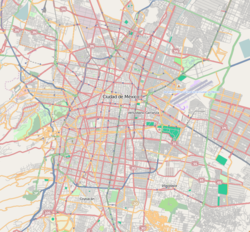| STC rapid transit | |||||||||||
 The station in 2015 | |||||||||||
| General information | |||||||||||
| Location | Colector 13 street Lindavista, Gustavo A. Madero Mexico City Mexico | ||||||||||
| Coordinates | 19°29′16″N99°08′05″W / 19.487712°N 99.13466°W | ||||||||||
| Operated by | Sistema de Transporte Colectivo (STC) | ||||||||||
| Line(s) | | ||||||||||
| Platforms | 2 side platforms | ||||||||||
| Tracks | 2 | ||||||||||
| Construction | |||||||||||
| Structure type | Underground | ||||||||||
| Accessible | Partial | ||||||||||
| Other information | |||||||||||
| Status | In service | ||||||||||
| History | |||||||||||
| Opened | 8 July 1986 | ||||||||||
| Passengers | |||||||||||
| 2023 | 4,420,462 [1] | ||||||||||
| Rank | 85/195 [1] | ||||||||||
| Services | |||||||||||
| |||||||||||
| |||||||||||
Lindavista is a metro station along Line 6 of the Mexico City Metro. [2] [3] It is located in the Gustavo A. Madero borough. In 2019, the station had an average ridership of 17,878 passengers per day. [4]


